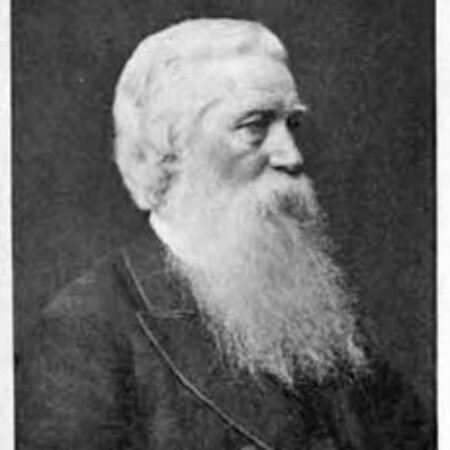Of his latest article about Scottish missionaries, Paul James-Griffiths of Christian Heritage Edinburgh writes, “This week we meet John Paton, a man of great determination and courage, who left Scotland to pioneer the church among cannibals in the New Hebrides (today called Vanuatu) in the South Pacific.”

John Paton stood, weeping and trembling with grief. His wife Mary had succumbed to fever and had died; days later their baby son Peter had also died. Alone and devastated, Paton wrote, “But for Jesus, and the fellowship He vouchsafed me there, I must have gone mad and died beside that lonely grave.” Worse still, he had to guard the grave, lest the local natives came, dug up the bodies, and ate them.
Paton’s mind went back to his home in Scotland, where he was born in 1824. He had grown up with godly Christian parents and ten siblings, all crammed into a three-bedroom cottage in Braehead in Dumfriesshire. Growing up in his father’s business as a stocking manufacturer, meant that he worked 14 hours a day from the age of 12. From a young age his love for Christ grew so much, that he felt a strong call to be a missionary to people who were shrouded in spiritual darkness. Ordained in the Reformed Presbyterian Church in 1858 he prepared for the mission field, being joined in marriage that same year by his first wife, Mary Ann Robson.
In 1858 John and Mary Paton arrived on the island of Tanna in the New Hebrides, (now called Vanuatu) in the South Pacific. They already knew something of the cost of this calling to reach the Pagan cannibals there. In 1839, the first two missionaries, John Williams and James Harris, had arrived at the neighbouring island of Erromango, where they were clubbed to death and eaten. Three years later Turner and Nisbet had tried to establish a mission base on the island of Tanna, but barely escaped with their lives. In 1848, Dr John Geddie and his wife from Nova Scotia settled on the island of Aneityum, where they found the locals unusually open to the gospel. They were joined on the other side of the island by Dr Inglis and his wife. Within a few years, over 3,500 local people had renounced their idols and had become Christians. But Tanna was a wild and violent place by comparison.
Recovering from the grief of losing his wife and son on Tanna, Paton pressed on to reach the people with the love of Christ. He described the people there as being “painted savages who were enveloped in superstitions and cruelties of heathenism at its worst.” Some of the converted natives of Aneityum came to Tanna to assist him, but greatly feared the locals. One young lad said to Paton, “Missi [Paton’s name of endearment], this is a dark land. The people of this land do dark works. At the boiling spring they have cooked and feasted upon the slain. They have washed the blood into the stream; they have bathed there until the waters are red. I cannot get water to make your tea. What shall I do?”
On Tanna Paton saw idol-worship, the worship of the “divine chiefs”, witchcraft, much violence and bloodshed. It was commonplace for husbands to beat their wives to death, and if the men died first, the locals would strangle the widows so that their spirits could join their husbands as slaves for them in the afterworld. Ritual human sacrifice to appease spirits was normal practice, as was cannibalism. Their children were unloved and neglected, as were their elderly. War and bloodshed would break out at the slightest provocation, and theft and deception were honoured. Into this dark world Paton sought to bring light and love. However, after protecting local women, the men became so enraged with him that he had to flee for his life in 1862.
Paton was not a man to withdraw into depression after his experience on Tanna. He travelled throughout parts of Australia and Scotland seeking to raise funding for another attempt at reaching the people of the New Hebrides, particularly using a ship for a team of missionaries, so that they could travel between the islands. In 1864 he married his second wife, Margaret Whitecross, and two years later they travelled to the island of Aniwa to share the gospel. They had six children on Aniwa, but lost four of them as babies, or as infants.
This time God opened up the hearts of the people of Aniwa. By 1899 they saw a host of 12,000 cannibals converted to Christ. Between them they trained up men and women in the faith, establishing a Bible school, healthcare, and industry for the locals. Paton’s Aniwa New Testament came out in 1889, and schools were established so that people could receive an education. By the time they left, there were native missionaries reaching 25 out of the 80 plus islands in the New Hebrides.
John and Margaret Paton are buried in Boroondara, Victoria, in Australia.
